Features
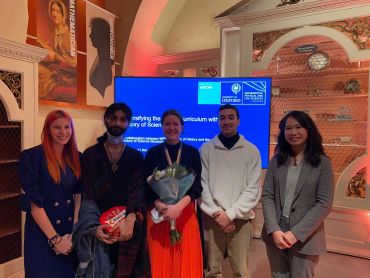 The four of the five undergraduate students from different universities who participating in the internship across five STEM-based subjects.
The four of the five undergraduate students from different universities who participating in the internship across five STEM-based subjects. The Diversifying STEM Curriculum project has created a unique and original collection of online materials engaging with some significant issues currently discussed in higher education and wider society.
The material reflects upon key scientific concepts and research and places them into wider historical contexts than has been the norm. In particular it highlights diverse contributions that have previously not been given the recognition they deserve including: ethnicity, gender, nationality, sexual orientation, disability, class and religion.
Each research project explores specific issues within their subject curricula to broaden the global historical and social context to scientific research
Jo Knights from Equality, Diversity and Inclusion team at the Mathematical, Physical and Life Sciences (MPLS) Division, said: ‘Each research project explores specific issues within their subject curricula to broaden the global historical and social context to scientific research, to give agency to scientists who have not been appropriately recognised, and to provide lecturers, researchers, students – anyone who is interested in diversifying their curricula – the content and research to integrate these projects into their teaching and learning.’
The projects aim to support the cultural shift towards a STEM curriculum that embraces an interconnected global view of sciences and maths, one that includes a diverse range of people and a more inclusive historical context.
The inaugural Diversifying STEM Curriculum project began in the summer of 2021, with five undergraduate students from different universities participating in a two-month internship across five STEM-based subjects at the University of Oxford. The students picked their own research topics and developed their final projects in collaboration with each other and their supervisors. The projects include:
Aleisha - Biology
By focusing on science as a process, I want to demonstrate how information builds and develops, and how it is communicated across cultures. I especially wanted to highlight the importance of agency, as oftentimes the narratives I’d heard would give agency to European scientists, but less so to people from other communities. I’ve chosen to discuss the world’s most consumed psychoactive drug: caffeine. Specifically, this project centres around coffee and yerba mate: two plants with seemingly opposing stories.
Mathematical history has brought out narratives about science that often focus on the singular, brilliant scientist, in most cases male and European,.... despite the ways in which the historical narrative is presented to the public, the evolution of mathematics is hardly as straightforward and linear as it may seem to be.
Adil - Physics:
My project seeks to provide a decolonialist account of South Asian science by interrogating the scientific-historical environment of colonial India at the time of its acceptance into western scientific spheres in the mid-20th century.’
Samy - Mathematics:
‘Teaching of mathematical history has brought out narratives about science that often focus on the singular, brilliant scientist, in most cases male and European, who makes substantial contributions through their innate genius. However, despite the ways in which the historical narrative is presented to the public, the evolution of mathematics is hardly as straightforward and linear as it may seem to be. We must therefore begin our delving into this history of mathematics as an attempt to unveil our own cultural prejudices.’
Sara - Chemistry
‘Named reactions are a very useful tool in organic chemistry and their importance became evident as their number increased through time. However, they are becoming increasingly controversial. One of the major issue arising is that at least half of the population was blatantly forgotten in the naming process: women. I am highlighting the origins behind the limited number of reactions named after women in the first thirty years of the 20th century and celebrating the achievement of women pioneers in organic chemistry in Europe.’
One of the major issue arising is that at least half of the population was blatantly forgotten in the naming process: women.
Yayan - Engineering:
Engineering has developed rapidly in the UK and has been one of the main engines of the UK economy. But it is obvious that the gender imbalance in engineering is relatively high, compared with other industries. In 2016, women only accounted for 21% of the engineering workforce, comparing with 47% in all industries on average. I’m investigating how gender equality was improved in the past, and if there are any lessons learnt which can improve gender equality at the present. I’m looking particularly at the inter-war years because women engineers started to realise the importance of gender equality and took various approaches to promote women’s status in engineering.’
The Departments of Chemistry, Engineering Science, Maths, Physics and Zoology have partnered with the Faculty of History and the History of Science Museum for these projects. Funding has been received from the Vice Chancellor's Diversity Fund.
See all the projects here: https://www.mpls.ox.ac.uk/equality-and-diversity/diversifying-stem-curriculum-projects-2021
Cutting-edge scientific study of gold coins from different moments of the Roman Empire has revealed a thriving economy in the periods when the coins were minted.
Researchers from the University of Oxford and the University of Warwick brought three Roman coins for analysis by the Science and Technology Facilities Council’s ISIS Neutron and Muon Source. Each coin was from the reign of a different Roman emperor: one from Hadrian (2nd century AD), one from Tiberius (early 1st century AD) and one from Julian II (4th century AD).
When high-value artefacts need to be analysed, researchers are generally required to employ non-destructive techniques. The aim in this case was to see if the coins had been surface enriched – or secretly mixed with other metals. By doing this, the team could deduce a number of things, including the levels of economic stability.
The results from the surface level analyses of these coins suggested that they were very high purity gold...We know the Romans deliberately surfaced enriched their silver coins to ‘hide’ the fact there was a lot of copper in them, so it is plausible something similar happened to the gold
Dr George Green
Lead author, Dr George Green, Leverhulme Trust Early Career Fellow and Lavery-Shuffrey Early Career Fellow in Roman Art and Archaeology at the University of Oxford, says, ‘The results from the surface level analyses of these coins suggested that they were very high purity gold. However, these measurements were from the first few fractions of millimetres of the coins. There was a very reasonable ‘what if’ of ‘what if they’re actually made of something different beneath the surface?’ We know that the Romans deliberately surfaced enriched their silver coins to ‘hide’ the fact there was a lot of copper in them, so it is plausible something similar happened to the gold.
‘Our work at ISIS enabled us to sample the very centre of these coins totally non-destructively and conclusively show that the high purity seen on the surface was representative of the composition of the ‘core’ of the coin. At a basic level, it is further testament to the economic health of the Roman Empire, but these conclusions are also useful for researchers who need to employ non- or negligibly-destructive techniques on the surfaces of Roman gold coins. Now they can be confident the surface is representative of the bulk of these objects.’
Our work at ISIS...conclusively shows the high purity on the surface was representative of the ‘core’
To measure the purity of the gold coins they used muonic X-ray emission spectroscopy, a totally non-destructive analytical process that involves firing negative muons at the artefact. The muons are then captured by the atoms within the coins, which then emit a ‘fingerprint’ of muonic X-rays that are unique to the chemical element they came from.
Using this technique allows scientists to probe deeper into the elemental make-up of the historical artefacts than possible with other methods, while being entirely non-destructive.
Muonic X-ray emission spectroscopy also does not require the object to be cleaned before analysis, reducing the workload placed on cultural heritage institutions. Cleaning some artefacts can actually lead them to become damaged, so this technique is particularly useful for analysing objects still covered in a layer of mud or soil – such as those salvaged from shipwrecks.
These results highlight the potential of this technique within the field of cultural heritage. It is a non-destructive technique...making it a perfect tool for those working on museum collections
Dr Adrian Hillier
Dr Adrian Hillier, lead instrument scientist at ISIS and the muon group leader, says, ‘These results highlight the potential of this technique within the field of cultural heritage. It is a non-destructive technique that can sample deep beneath the surface of archaeological objects. It requires no sample preparation and does not leave the artefact radioactive, making it a perfect tool for those working on museum collections.
‘Beyond working out the sub-surface purity of an object it could: determine the depth of any corrosion on an object; identify chemical changes within the artefact caused by unique manufacturing processes; or reveal that an object we thought was made of one thing is actually a forgery made of another – all without causing any damage.’
The RIKEN-RAL muon beamlines at the ISIS Neutron and Muon source was used as they could produce muons with a high enough momentum to penetrate deep beneath the surface of the artefact being studied. The muons are created by bombarding a carbon target with high energy protons, this causes the creation of pions which are extracted and then decay into muons. These muons have a range of different momenta; the muons with lower momentum are used to analyse the surface of the artefact and the high momentum muons pass deeper into the artefact obtaining data from its core.
See the journal article.
The year is 1934, and in a laboratory hidden in the basement of the Oxford University Museum of Natural History, a young woman peers at the clear crystals handed to her by the Waynflete Professor of Chemistry at Oxford University. The crystals are made of the peptide hormone insulin, which has been familiar to endocrinologists since 1921. But its intricate structure is still a mystery.
Its importance, however, was known even before insulin was actually discovered – the name ‘insulin’ was first used by the British physiologist Sir Edward Sharpey-Schafer in 1916, for a hypothetical molecule produced by the pancreatic islets that controls glucose metabolism.
Insulin stopped being hypothetical in 1921, when the Canadian physiologists Frederick Banting and Charles Herbert Best, working in the laboratory of J.J.R. Macleod, isolated insulin from a dog’s pancreas.
On a cold January just a few months later, Leonard Thompson, a 14 year old boy with diabetes, became the first person ever to receive an injection of insulin. Despite a serious allergic reaction, the insulin treatment worked, with usually high levels of blood and urine sugars seen in diabetes dropping to normal – Leonard lived for another 13 years.
'Before the discovery of insulin, there really wasn’t much you could do for people who had diabetes’, said Katharine Owen, Associate Professor of Diabetes and diabetes consultant physician. 'It really was a terrible diagnosis.'
100 years after the discovery of insulin made diabetes a treatable illness, it continues to be an active subject of study for scientists, including at Oxford. Endocrine research at the University has long roots, and it was here, in 1934, that the Nobel prize-winning physiologist Dorothy Hodgkin took the first X-ray crystallography photos of an insulin crystal, in her basement laboratory at the Museum of Natural History.
But while insulin’s intricate structure and its utility in treating diabetes (known since 1922) continued to fascinate Professor Hodgkin, it wasn’t until 1969 that she and her team were able to decode the structure of insulin –when she first started studying insulin, X-ray crystallography and computing techniques were simply not advanced enough to untangle the complex structure of insulin. It took 35 years of collaborative work at Oxford and beyond before these techniques were up to the task of understanding insulin.
On the face of it, insulin is simple – it’s a short chain of amino acids, produced by beta cells of the pancreatic islets, and it spurs the liver, fat and skeletal muscle cells to absorb glucose from the blood stream. But decreased or absent insulin activity, as well as insensitivity to insulin results in diabetes, a disease that affects 422 million people across the world.
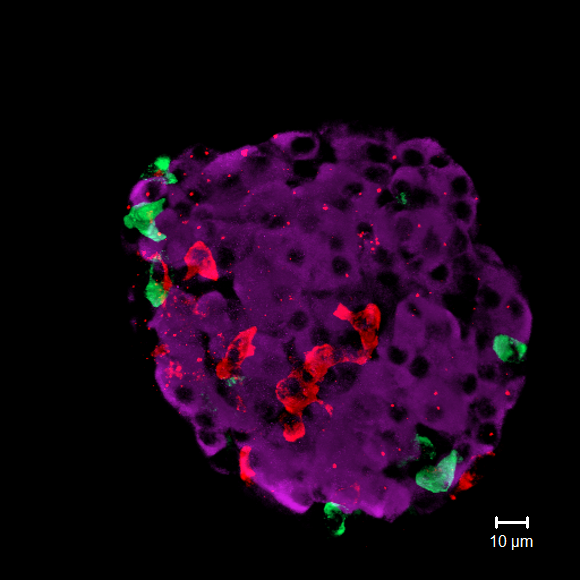 A microscopy image showing mouse islet cells: the purple blobs are insulin-producing beta cells (credit: Dr Quan Zhang, OCDEM)
A microscopy image showing mouse islet cells: the purple blobs are insulin-producing beta cells (credit: Dr Quan Zhang, OCDEM)Understanding the structure of insulin not only made the mass production of insulin possible, allowing many more people to be treated – it also allowed other researchers to alter the structure of insulin, to create even better treatment options for patients. Insulin was the first protein to be chemically synthesised and produced by DNA recombinant technology, and it is on the World Health Organisation’s list of the medications needed in a basic health system.
But 100 years on, only about half of people requiring insulin actually have access to it. Within the UK, compared to white cohorts, children and young people with type 1 diabetes from minority ethnic communities are more likely to have higher indices of uncontrolled blood sugar, and were less likely to use insulin pumps or real-time, continuous blood sugar monitoring.
'These interventions have been really transformative in how we treat patients with diabetes', said Professor Owen. 'It is important that we try and get these treatments to all patients.'
A DIY movement
Professor Owen has seen the insulin treatment for diabetes transformed over the course of her 20 year career. 'Initially, the insulin treatments we gave didn’t allow patients much flexibility – patients had to eat meals with set amounts of carbohydrates, to match the insulin dose than clinicians gave them,' she said.
'But now, there are short and long-acting varieties of insulin, and patients can titrate the amount and type of insulin they take to fit in with life, mimicking a natural physiological response much more closely.'
This change has been driven by greater understanding of how insulin works, as well as technological advances such as insulin pumps (a small, body-worn electronic device that delivers insulin) and continuous glucose monitors (which continuously monitor blood sugar levels, and can easily send this information to a device like a smartphone). Enterprising diabetes patient communities have taken these technologies a step further – the #WeAreNotWaiting diabetes DIY movement developed a community-developed, open source algorithm that allows insulin pumps to use the information from continuous glucose monitors to dispense the appropriate amount of insulin, a closed loop which comes close to mimicking how insulin control works normally.
Professor Owen hopes that researchers will continue to refine this closed loop technology, and over 50 years after the structure of insulin was decoded at its Natural History Museum, Oxford University continues to be a hotbed of insulin and diabetes research: the University works closely with Novo Nordisk, the healthcare company which first started producing insulin in 1922, months after it was first used in a patient. Professor Chas Bountra, the Oxford University Pro-Vice-Chancellor for Innovation, says: 'Our partnership with Novo Nordisk has enabled us to accelerate game changing research through sharing valuable resources and knowledge exchange. This ultimately leads to people with diabetes benefiting sooner from resulting medical innovations.'
The Novo Nordisk Research Centre Oxford aims to identify game-changing therapies for patients with type 2 diabetes and cardiometabolic diseases, and Professor Bill Haynes, VP and Site Head of the Novo Nordisk Research Centre Oxford explains its mission: 'These projects involve innovative in vitro and in silico approaches to gain a deeper understanding of the mechanisms involved. Using cutting edge methodologies and collaborating in this way gives us the best chance of finding novel therapies for patients with diabetes.'
Similarly, the Oxford Centre for Diabetes, Endocrinology and Metabolism (OCDEM) combines clinical care, research and education in its building at the Churchill Hospital, while the Diabetes Trial Unit specialised in performing local, national and multinational clinical trials to treat and manage diabetes.
Predicting the future
A major theme of recent work has been to identify and treat worsening conditions even before they happen – work led by OCDEM’s Professor Rury Holman suggests that clinicians might be able to predict diabetes-associated heart failure in newly diagnosed type 2 diabetes patients with a simple blood test. Another major project from OCDEM’s Dr Rustam Rea aims to develop a tool to predict which people with diabetes are at risk of low blood sugar levels when they are admitted to hospital.
In contrast to type 2 diabetes, which is caused by the body becoming increasingly insensitive to insulin even though it is still being secreted, type 1 diabetes is caused by the insulin-producing beta cells being destroyed, because of an auto-immune reaction.
But here too, Oxford researchers hope to enable clinicians to act early – Professors John Andrew Todd and Linda Wicker are currently trialing therapy using a new drug to compensate for this autoimmune reaction. Professor Todd said ‘Our hope is the results will help to implement a therapy for children and young adults who have signs of autoimmunity but are not yet diagnosed with the disease and thus prevent progression of this serious disorder, which affects one in 400 children per year.’
In September this year, Professor Todd was awarded the 2021 EASD-Novo Nordisk Foundation Prize for Excellence, for his decades of effort to understand, prevent and combat type 1 diabetes, some of which may ultimately make insulin redundant as a treatment.
‘The really remarkable thing is that 100 after the discovery of insulin, the fundamental treatment for diabetes hasn’t changed – doctors gave diabetic patients insulin in 1922, and we still give essentially the same treatment in 2021,’ said Professor Owen. 'But this new line of work raises the possibility of immunotherapy for at least some types of diabetes, which means we’ll finally have treatments other than insulin to offer.'
'I’m really optimistic about the future of treatment for diabetes, especially type 1 diabetes,' she added. 'Instead of figuring out better ways of giving insulin, we’re finally at the point where can start testing treatments that stop the disease getting worse, or even reverse it.'
The centenary of the discovery of insulin may therefore finally mark the turning point where insulin treatment for some of the diabetes patients who currently rely on it, may no longer be required.
- Without urgent action climate change will make it increasingly difficult to achieve a quality education – especially for disadvantaged girls and young women.
Dr Catherine Porter, Young Lives Director, highlights an often overlooked impact of climate change on education
Young Lives’ unique longitudinal research reveals in stark terms how childhood exposure to climate shocks such as droughts and floods has an unequal impact on children’s development, affecting their nutrition and access to education. This impedes their learning progress, with poorest children most affected.
The climate crisis intersects with another crisis: interrupted education and widening inequalities during the COVID-19 pandemic. Urgent action and new research is required to help build resilience, enable 12 years of quality education for girls and boys, and help to prepare them to face vulnerabilities that previous generations have never had to deal with.
Extreme weather events are becoming more frequent with the poorest households hardest hit.
Extreme weather events are expected to rise in frequency and intensity, even if COP26 is successful in charting a path for limiting global warming to 1.5C. And we know low-income countries and younger generations will be hardest hit.
Since 2001, the Young Lives study, has followed the lives of 12,000 children in poor communities across Ethiopia, India (Andhra Pradesh and Telangana), Peru and Vietnam. We have built a unique body of data with huge potential for understanding the long-term impact of climate change on vulnerable children and young people. Our research shows that extreme weather events experienced during childhood are having a significantly unequal impact on the poorest and most vulnerable groups.
By the age of 15, many children in our study had already experienced at least one extreme weather event, such as drought or flooding. In Ethiopia, it was more than half of our sample (54%), 44% in India, and around a third in Vietnam (34%) and Peru (30%).
Children living in the very poorest households have been significantly more affected [by extreme weather events]. In Ethiopia, a startling 81% of children in our poorest households experienced at least one extreme weather event, compared to only 22% in the least poor households
And children living in the very poorest households have been significantly more affected; in Ethiopia, a startling 81% of children in our poorest households had experienced at least one extreme weather event, compared to only 22% in the least poor households. Similar trends can be seen in India (65% v 18%), Peru (63% v 12%) and Vietnam (50% v 17%).
Climate related shocks affecting children in their early life have negative impacts on their growing bodies and minds
When extreme weather events destroy crops or lead to higher food prices, vulnerable families struggle to maintain nutritious diets. Young Lives’ evidence shows that poor diets and child malnutrition can have severe long-term consequences, affecting physical growth, cognitive skills, and progress in school. Across all four countries, the children most likely to be under-nourished are in the poorest households, in rural areas, and often among minority groups.
The first 1000 days of life – from conception to age 2 - are critical for children’s health, development and life chances. In Ethiopia, our results show that early childhood stunting due to malnutrition has a significantly negative impact on important cognitive skills, such as vocabulary and basic mathematics, especially for children whose parents received little or no education.
Climate-crisis induced malnutrition can also be transmitted from one generation to the next
These early stage shocks have significant long-term consequences. In India, Young Lives data matched with historical rainfall data shows that droughts, flooding or cyclones experienced by a mother while she is pregnant can affect the future development of her child’s vocabulary by age five. Longer term effects on basic maths and socio-emotional skills such as self-esteem, self-efficacy and agency, manifest even into adolescence.
In fact, analysis across all four study countries found that rainfall shocks and malnutrition experienced by adolescent girls even before they became pregnant can have a negative impact on future children’s height, again from infancy through to adolescence. Thus, climate-crisis induced malnutrition can also be transmitted from one generation to the next.
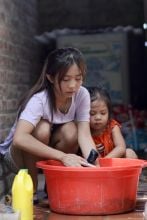
Poorer households are less resilient to financial hardships when climate shocks hit, which can increase the risk of interrupted education
Climate related shocks impact children and young people’s learning and education in different ways throughout their lives. In Vietnam, Young Lives evidence has shown reduced household income due to crop failures directly impact the amount of time children spend in school, particularly those from poorer households.
Families without access to affordable credit spend less on their children’s education during periods of crisis (for example, on school fees, learning materials or transportation) and are more likely to temporarily withdraw children from school, with less learning time available at home, leading to significant interruptions in education.
Without targeted action, the climate crisis is likely to further exacerbate inequalities, just as we have seen during the COVID-19 pandemic.
Girls and young women shoulder additional burdens of household work in times of crisis, amplifying their risk of dropping out of school
Food shortages and stresses on clean water supplies in times of drought and flooding also impact young people’s daily activities. Additional household work, such as walking further to collect drinking water and firewood, or extra childcare responsibilities when children are unable to go to school, often fall on girls and young women, further reducing their own time to study and increasing their risk of dropping out of school altogether.
Hunger can affect a child’s ability to concentrate in the classroom and also increases the likelihood of missing school.
We couldn’t get breakfast last year; we used to go to school without eating anything. We could not follow lessons properly due to hunger, and this contributed to the drop-out of my sister and myself
16 year old girl from Ethiopia, describing the impact of food shortages following drought in her village
The unequal impact of COVID-19 on education highlights a critical need to adapt for the climate crisis
Despite improvements in access to both primary and secondary education over the last two decades, significant inequalities in learning outcomes remain between and across all four of our study countries, with children from poor households and in rural areas consistently disadvantaged.
Without targeted action, the climate crisis is likely to further exacerbate inequalities, just as we have seen during the COVID-19 pandemic. Our recent COVID-19 phone survey shows that interrupted education and a growing digital divide have increased the risk of children and young people from poor and rural backgrounds falling further behind, or never returning to education.
While our results show significant impacts on both girls and boys, the combined pressures of interrupted education, and the trend for households to resort to more traditional gender roles in times of stress, has meant vulnerable girls and young women, have been particularly affected.
And those who have been most impacted by the pandemic are likely to be most vulnerable to the increasing effects of the climate crisis.
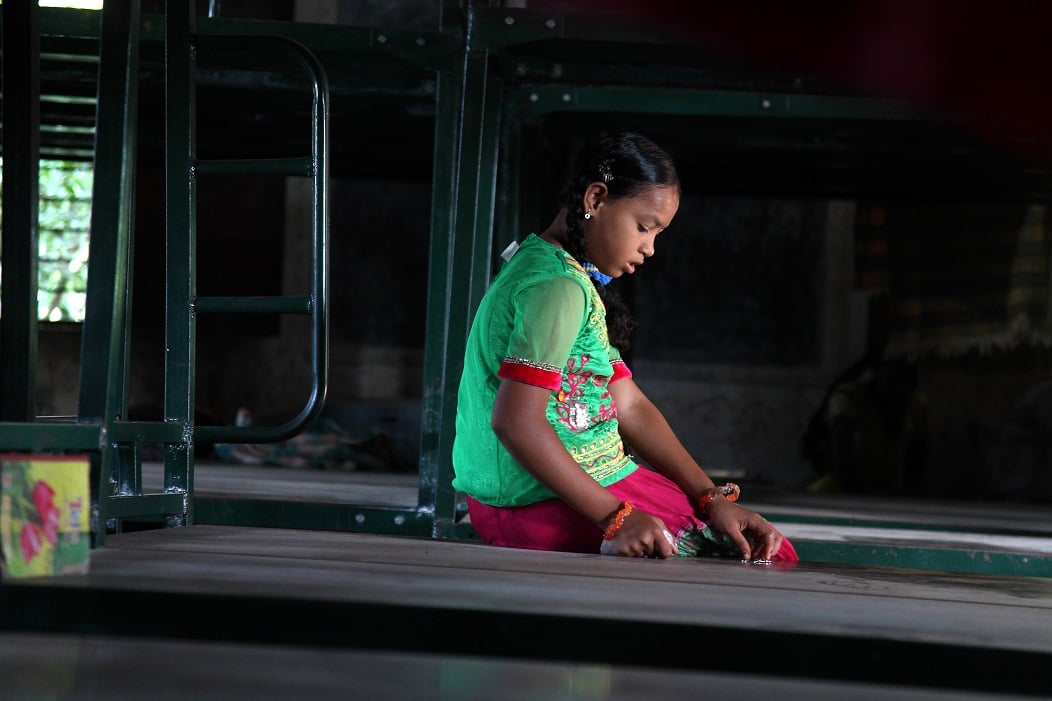
A call to action for more robust research and a broad approach to supporting vulnerable children achieve a quality education
Ensuring countries around the world honour commitments made during COP26 is critical if we are to prevent extreme global temperature rises, and enable the most disadvantaged communities to adapt to climate change in ways that safeguard children’s development and education – especially for girls and young women.
Enabling 12 years of quality education for all children (especially girls) in a changing climate requires a broad approach. Investing in teachers, schools and universities to improve the quality of education is pivotal. But really to make a difference, we also need to address the persistent inequalities that hold children back and make them more vulnerable to external shocks. Ensuring all children get the right start in life, including a sufficient and healthy diet is the foundation for future learning. Providing an enabling environment for all girls and boys to stay in school, with sufficient resources to study is also essential.
With increasing extreme weather events...we need much better understanding of how vulnerable communities actually experience and respond to climate related shocks
With increasing extreme weather events continuing to impact the poorest families most, we need much better understanding of how vulnerable communities actually experience and respond to climate related shocks throughout their lives.
We need to build evidence on:
- how climate related shocks, nutrition and learning interconnect – enabling more holistic programmes of support, including ‘shock-responsive’ social protection programmes to reach disadvantaged households in disaster prone regions, particularly for vulnerable infants and adolescent girls, aligned with early learning and school feeding programmes.
- how and why persistent inequalities continue to underpin the learning crisis in education – further longitudinal research is critical to understand both trends over time and the impacts of specific shocks, including climate related shocks; targeted investment in early years education and addressing the growing digital divide is critical to support poor and marginalised households, particularly in rural areas.
- the additional barriers to girls’ education in a changing climate – strengthening age and gender disaggregated data and evidence on the impact of climate change, and enabling specific action to help keep girls in school in times of stress, including practical measures to relieve burdens of household work and childcare responsibilities.
Dr Porter will be discussing these issues further as part of the COP26 Gender Day Event, Our Future, Our Voice – Girls’ Education and Tackling the Climate Crisis, hosted by the UK’s Foreign, Commonwealth & Development Office (FCDO) on 9 November 2021; to join the event live - see here.
Or here Our Future, Our Voice: Girls' Education and Tackling the Climate Crisis - YouTube
Mosquitoes are notoriously dangerous, responsible for over one billion cases of disease and around a million deaths each year. Tackling diseases such as malaria, yellow fever and dengue requires targeted control of their vector, the mosquito. This in turn relies upon detailed knowledge of the distribution, diversity and abundance of mosquitos in space and time.
The HumBug project has developed methods to detect and identify different species of mosquitoes using the acoustic signature (sound) of their flight tones, captured on an inexpensive smartphone.
The project recently openly released five years’ worth of research data of acoustic mosquito flight tones from 36 different species, representing over 20 hours of audio recordings that the team have expertly labelled and tagged precisely in time.
Co-Principal Investigator Professor Stephen Roberts says of the data release, 'Making our extensive dataset openly available will prove hugely beneficial to entomologists and mosquito domain experts. The scale of the data and associated algorithms is unique. We hope it will enable a better understanding of mosquito behaviour, distribution and help manage the threat they pose to humans.'
By using sound to identify different species, the Humbug system generates unprecedented levels of urgently needed high-quality, spatially accurate mosquito occurrence data without incurring any risk to those conducting the surveys. The recordings, along with their time and location, are uploaded by the app to a central server where mosquito sounds are detected and the species is identified using a suite of algorithms that distinguish species according to their acoustic signature.
The paper presents the first large-scale multi-species dataset of acoustic recordings of mosquitoes tracked continuously in free flight, at data collection sites include Kenya, Thailand and Tanzania, the UK, and the USA. It will be presented at the 35th Conference on Neural Information Processing Systems 2021 with an oral presentation in December 2021.
The HumBug Project is supported by a grant awarded through the 2014 UK Google Impact Challenge, the ORCHID project and the Bill & Melinda Gates Foundation. The project team includes researchers from the University of Oxford, Ifakara Health Institute in Tanzanis and the Kinshasa School of Public Health in the DRC.
- ‹ previous
- 11 of 247
- next ›
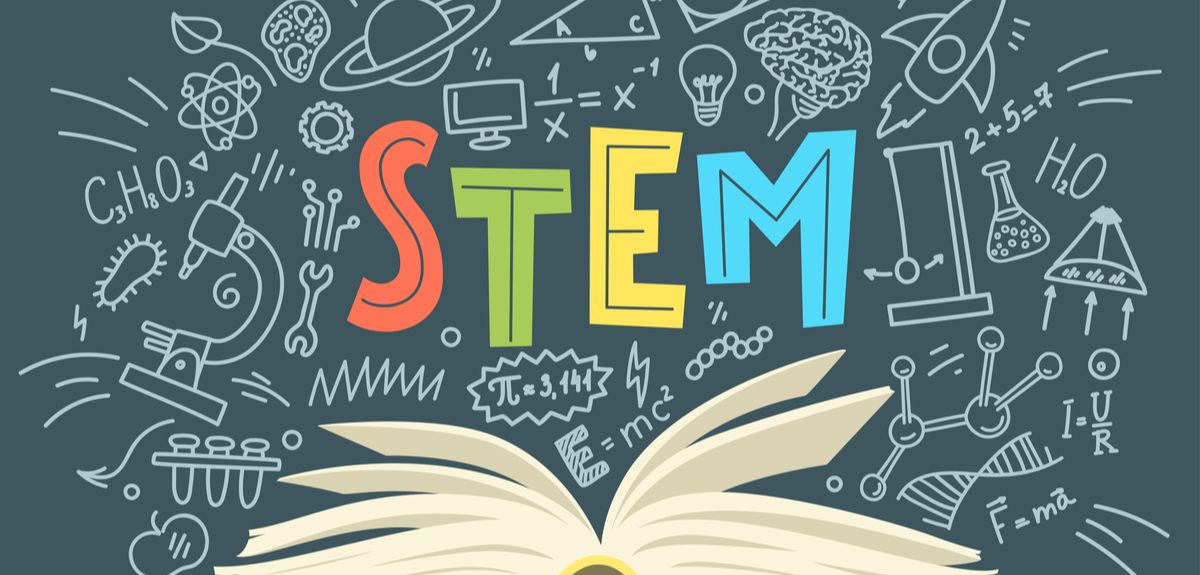
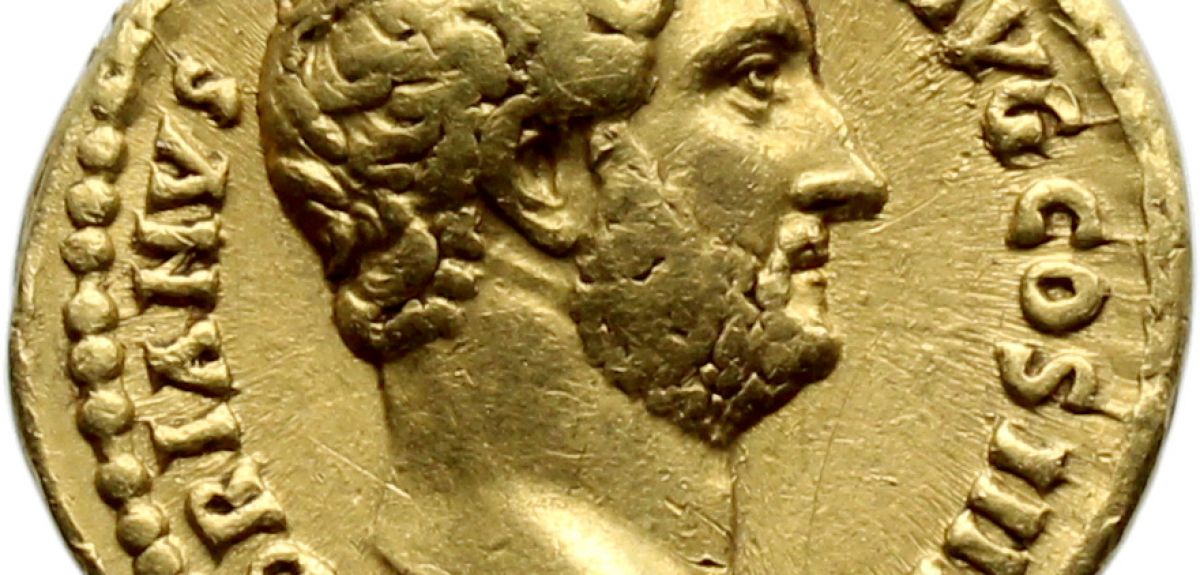
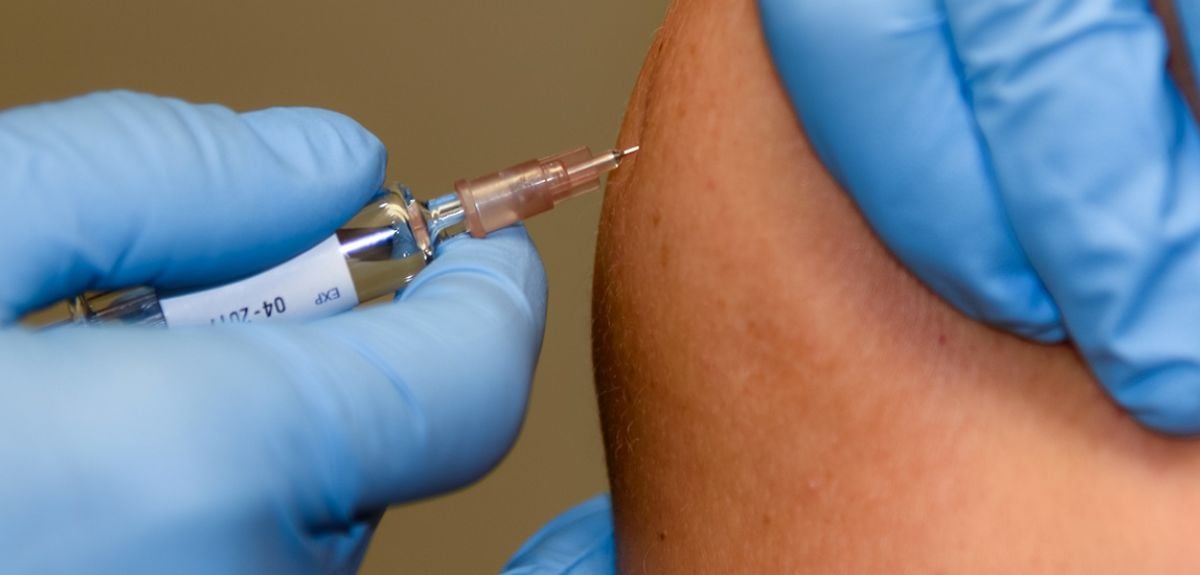
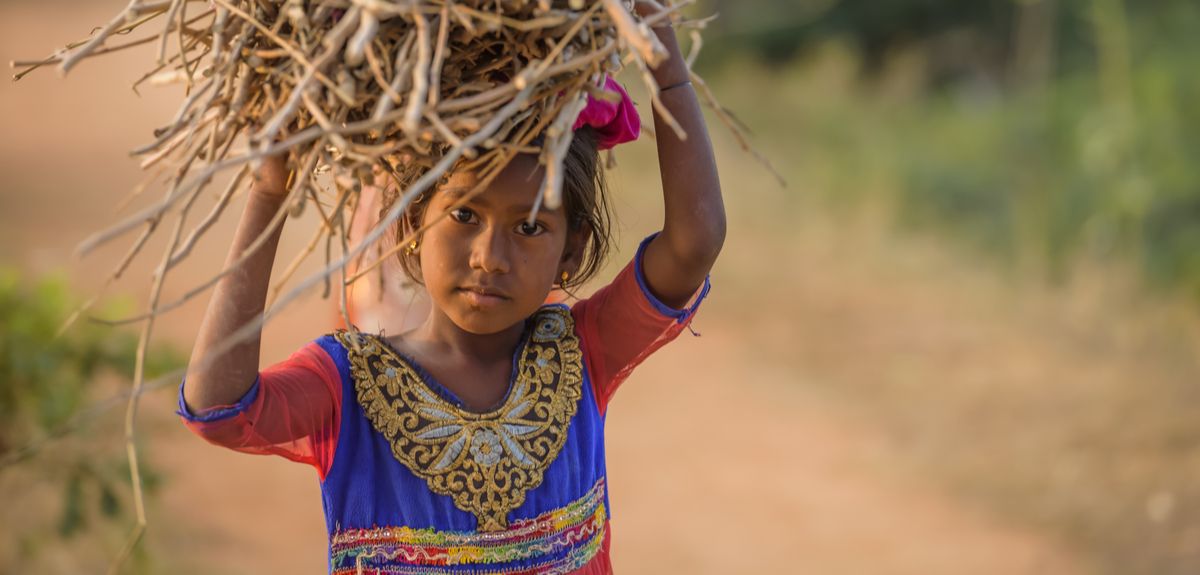
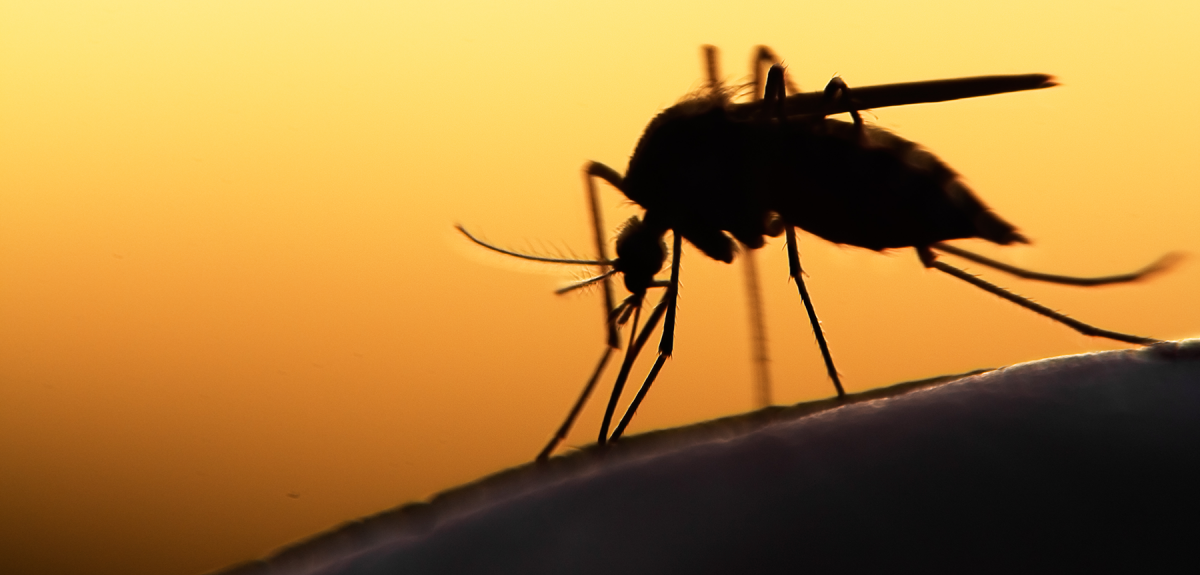
 World Malaria Day 2024: an interview with Professor Philippe Guerin
World Malaria Day 2024: an interview with Professor Philippe Guerin From health policies to clinical practice, research on mental and brain health influences many areas of public life
From health policies to clinical practice, research on mental and brain health influences many areas of public life From research to action: How the Young Lives project is helping to protect girls from child marriage
From research to action: How the Young Lives project is helping to protect girls from child marriage  Can we truly align AI with human values? - Q&A with Brian Christian
Can we truly align AI with human values? - Q&A with Brian Christian  Entering the quantum era
Entering the quantum era Can AI be a force for inclusion?
Can AI be a force for inclusion? AI, automation in the home and its impact on women
AI, automation in the home and its impact on women Inside an Oxford tutorial at the Museum of Natural History
Inside an Oxford tutorial at the Museum of Natural History  Oxford spinout Brainomix is revolutionising stroke care through AI
Oxford spinout Brainomix is revolutionising stroke care through AI Oxford’s first Astrophoria Foundation Year students share their experiences
Oxford’s first Astrophoria Foundation Year students share their experiences